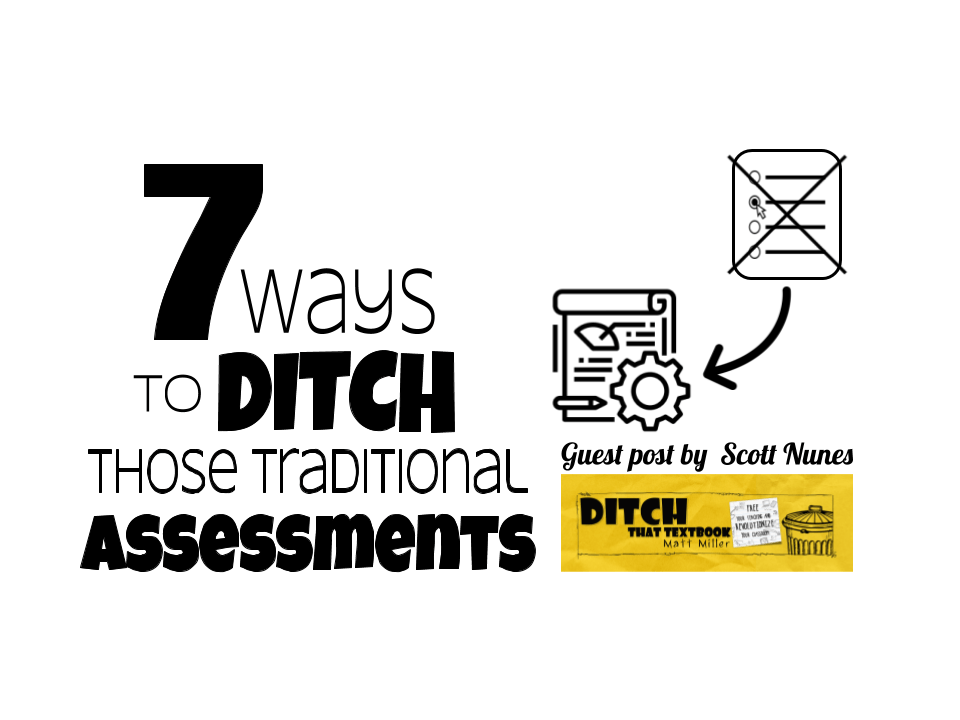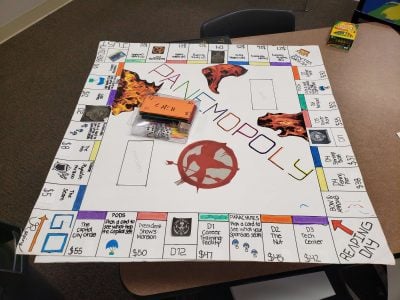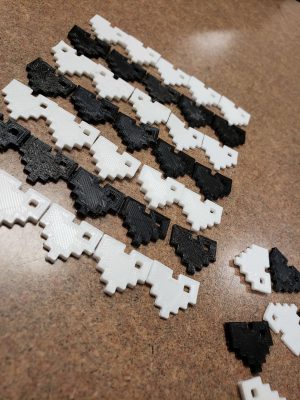

Multiple-choice tests don’t often give us a clear view of our students’ learning. How can we give students the opportunity to really show what they know in an engaging way? Here are 7 ways.
For a couple of years now I have been wondering if there is a better way to do summative assessments. Typically, in my district, we offer standard multiple-choice tests and possibly some writing options for our summative assessments but I didn’t feel like it was giving me a clear picture of what my students really knew. This year I got the green light by my admin to go bold and try something different.
I had noticed a large increase in student investment, performance, and outcomes when I choose to ditch homework, so I thought, why not ditch those traditional assessments too? I did and it was a huge success! The investment my students made in themselves with this project was astounding. My students worked hard, were challenged, and were successful in overcoming those challenges, which gave them a real sense of accomplishment.
So how can you get started ditching too?
The first step is to DREAM big! DREAM stands for Ditch the fear, be a Risk-taker, Evaluate what standards you want to target, Assess what layers of success look like, and then create Measurable skills. I recommend following these steps for formative assessments first to create an efficient workflow, work out any kinks, and to test your own methods of assessing.
Protip #1: Start small with a few standards when doing formative assessments, and then for summative assessments borrow the best parts of your formative assessments and incorporate them into your summative assessment.
What does this look like?
For me, this looked like developing a series of rubrics to evaluate skills through the grading period, and then grab the most important ones for my summative assessment. I am all about helping my students be career-ready, so I layered on industry standards from successful businesses. I included things like professionalism, sustainability (incorporating the United Nation’s Sustainable Development Goals #9 and #12), and use of time in class.

Example of a student-designed game.
I employ UDL (Universal Design for Learning) and Backwards Design to figure out what my summative assessment should look like before I even start designing it. For my summative assessment, I chose to go the route of PBL (Project Based Learning) in the form of a game. Students were presented with the option to either design and produce a review game or an instructional game on a novel we read in class. The game either had to be digital or analog. Only a small portion chose digital. Most went with analog.
Protip #2: Do the assessment yourself and create an example. I find that most of my questions will be eliminated if I have an example of what a polished finished product will look like. Students will aim to do better than the example, so expect some great student models the next time you give the same summative assessment!
More resources:

3D printed game pieces.
Before this assessment I have my students engage in a variety of similar activities. We play games, tweak existing games, and explore what makes games successful. I start with this in the first stage of the assessment. I have students empathize with other students when approaching how to design their game. They also have to define what game types work best through gameplay and experience. To help them I use Jonathan Spike’s Game Storm EDU website and his resources. He does a great job of providing game types, how they work, and when to use those types of game design. He also has resources on how to customize game design. Students use those to create prototypes and test their games before submitting them for review.
More Resources:
If you are going to assess many standards as I did, I highly recommend to break them into sections. This reduces your workload at a given time and reduces student anxiety. Having many things to focus on can be daunting.
Always provide many instances for feedback! Have regular check-ins. For my summative assessment, we spent five weeks on it. I offered eight scheduled check-ins. The first five were each focused on a section of the project, the remaining three were fail-safes. These were used to verify that students made suggested changes. I also gave informal feedback while they were working. This helped to steer them in the right direction or offer encouragement and a helping hand in overcoming an obstacle.
I also allowed time for peer feedback, but it was very structured. I gave a checklist of specific things to look out for like spelling errors, typos, or formatting issues. I also provided a list of resources on how to fix those common errors. Students could also frame they type of feedback they wanted to receive–this was especially good in keeping morale high.
More resources:
Failure at some point is inevitable, so plan accordingly. Decide how you will aid when challenges seem insurmountable. Rabbi Michael Cohen describes failure as “a process not a destination” on this blog post. He goes on to say that FAILURE stands for: First Attempt In Learning, and adds an important action item: Unless Reflection Exists. I took this to mean that we need to analyze and reflect on our failures to allow them to propel us forward rather than allow them to impede our progress.
More resources:
I decided early on in the process that I wanted my students to do their best and have every opportunity for success available. Prior to this, I would hear: “gimme one more chance” (reminds me of the Notorious BIG song). To make things easier on myself and on my students, I embedded that “one more chance” or redo into the assignment. I evaluated each step of the project before assigning a final grade. The only thing students did not receive another shot at was on the presentation itself, but I was not concerned about their performance on this because there was so much preparation beforehand. All they had to do to be successful with that final step was to stay calm and share out their efforts.
At the end of the day, the standards do not matter if the people do not matter, therefore I start with Maslow before Bloom’s Taxonomy. I was able to get this kind of investment from them because on day one my focus is on rapport. Investing in students early on will pay dividends when it comes to summative assessments later on!
For notifications of new Ditch That Textbook content and helpful links:
Interested in having Matt present at your event or school? Contact him by e-mail!
Matt is scheduled to present at the following upcoming events:
[getnoticed-event-table scope=”upcoming” max=”15″ expanding=”false”]

Session expired
Please log in again. The login page will open in a new tab. After logging in you can close it and return to this page.
[…] 7 ways to ditch those traditional assessments– Matt Miller is a great go to. If you have read longer than today, you will know that I often post Miller’s blog here in the links. […]